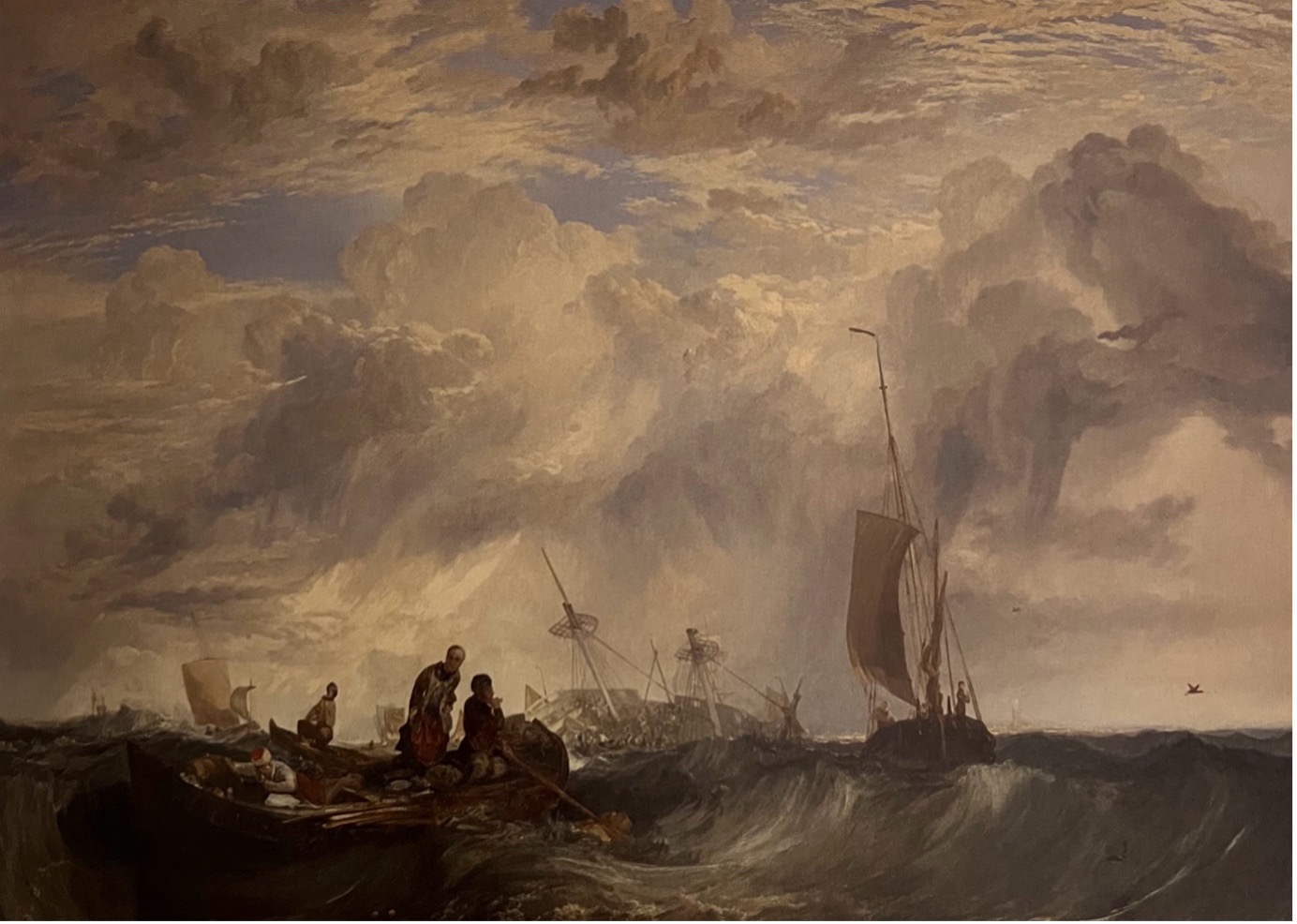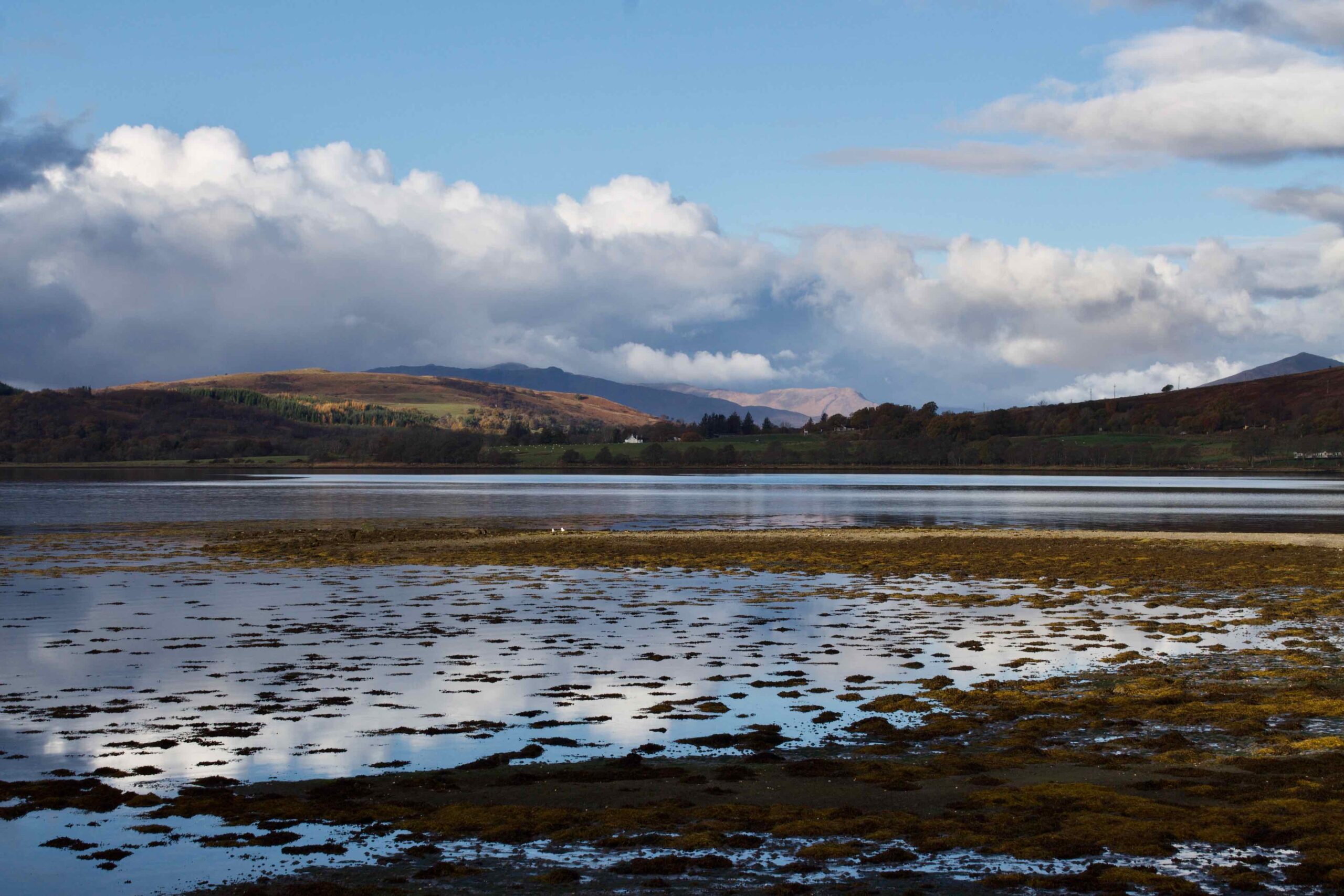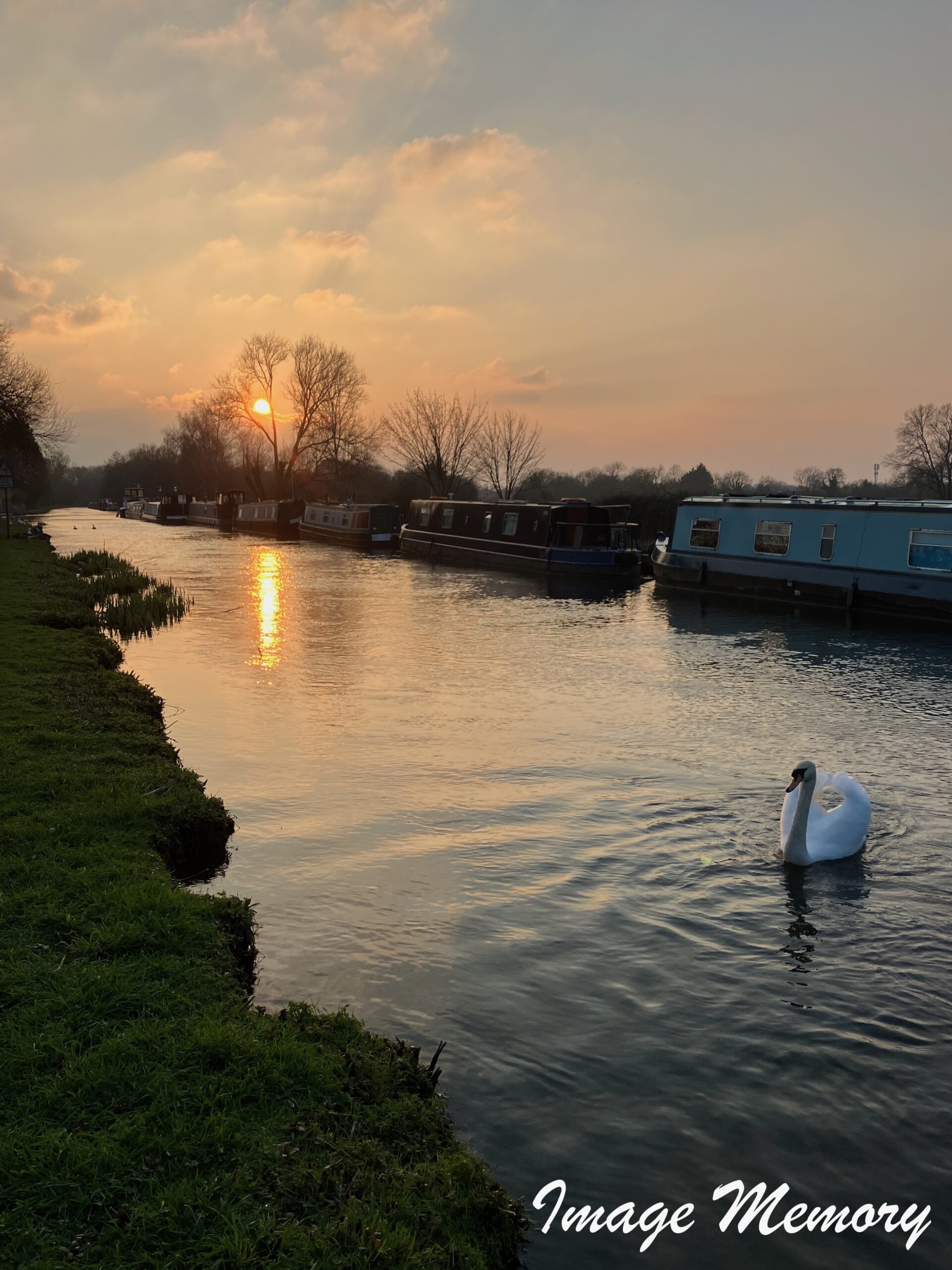‘The Service of the Clouds’

Entrance of the Meuse, JWM Turner, Orange Merchant Ship on the bar, 1819
The approach that English painters had for landscape painting, at the beginning of Turner’s career, included the ‘aerial perspective’ (used predominantly by Dutch artists in the 15th Century)
This system was a formula for producing atmospheric effect. The process was used for ensuring uniformity in a painting.
Distant objects were depicted as paler and bluer; those in the middle distance were green and objects in the foreground were brown.
The farther away the object the less detailed it became.
However, in the second half of the eighteenth century, English painters felt that aerial perspective’s inflexible colour scheme was imperfect.
They realised that the appearance of objects in the landscape depended on light, the movement of clouds and weather conditions.
Artists like Turner, John R Cozens, Thomas Girtin and Francis Towne changed their styles to allow for this.
Their choice of colours and brushstrokes captured the impression of a fleeting, transient moment.
This changeability in nature focused on the style that John Ruskin (1819-1900) called “service of the clouds.”
Turner was particularly adept at painting the sky, light and vapour – air.
The element of air played the most important role in Ruskin’s assessment of the innovations Turner contributed to painting.
According to Ruskin, Turner’s depictions of space were based on atmospheric transparency.
This achieved a more truthful representation of nature and was a part of the scientific foundation of art promoted not only by Ruskin, but also Johann Wolfgang von Goethe (1749-1832).
Turner’s work had vibrance to it, more closely showing the action of seeing through the sky rather than looking at it.
This is the effect that I am also trying to achieve with my photography. The camera never lies, but using light, cloud, water vapour and reflection can add a depth to two-dimensions.

Watchers of the skies, through observing what is happening above us, can also have other meanings…

Clearly, from a biblical perspective, the heavens, the skies above, are also important for contemplative moods. It is said that sitting on a beach for a few days a year, during a vacation is an important act for renewal.

The New Moon; or “I’ve lost My Boat, You shan’t have Your Hoop.” Turner 1840
Where the sea meets the sky is the furthest point that we can ever see, distance wise, with the eyes. Most work is close up, much of it nowadays screen-based. So having the opportunity to rest the eyes, mind and soul by quietly watching the sun retreat over the horizon, whilst listening to the breathing of the sea waves, can be cathartic.
Perhaps I like Turner’s work because of the reminiscences it invokes of past holidays.
Either way, the sky is never the same from one day to the next, so it always delivers a new perspective.

In 1819, Turner visited Italy. He was impressed by the intensity of light there. In Rome, Turner encountered the method of painting in oils directly from nature, which derived from Pierre-Henri de Valenciennes (1750-1819) and his international academy of plein-air painting from the 1770s and 1780s.
During extensive rambles through the Roman Campagna, open-air painters became aware of how important the sky was to achieving a uniform effect in painting.
Clearly, being in the open air, outdoors is also a weekend pursuit many of us look forward to at the weekends.
Sources of research: Turner and the Elements, Bucerus Kunst Forum

Your article is very informative and helpful in understanding how air, clouds and light influences your photography. Which captures all three elements. Congratulations.
Interesting reflections on the influences behind your rather lovely photographs!
Interesting reflection on the influences behind your rather lovely photographs.
Interesting reflection on the influences behind your rather lovely photographs.